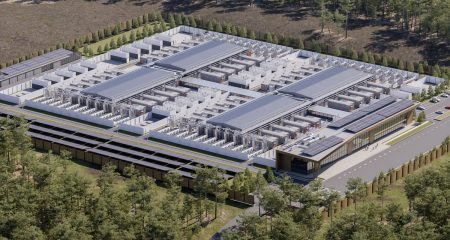
The future of IT thermal management is here … and it’s a hybrid of air and liquid cooling technologies.
Enterprises across the globe are adopting high-performance computing (HPC) for artificial intelligence and machine learning model training and inference, causing a swift rise in chip, server and rack power consumption, thus increasing heat dissipation levels.
Traditional air cooling alone within a data centre is not able to accommodate hot-running HPC equipment effectively, meaning that many data centre teams are strategising how best to design their cooling strategies future-ready in support of evolving business requirements.
Data centres must continue to be run efficiently, in a manner that addresses potential infrastructure risks. One such solution is the combined use of both air and liquid cooling options.
Anticipated growth of liquid cooling technology
According to a MarketsandMarkets Data Centre Liquid Cooling Market report, the global data centre liquid cooling market is projected to increase from US$2.6-billion in 2023 to $7.8-billion by 2028. That’s a compound annual growth rate of 24.4% during the forecast period.
This development is primarily being driven by the requirements for increased cooling efficiency, energy savings, scalability, sustainability and higher performance.
In Africa, where climate and infrastructure issues loom large, there are additional pressing reasons to look at the efficiencies of liquid cooling technologies in data centres.
Fighting water issues with… water?
One of the main challenges when considering cooling solutions for data centres is the fact that servers need to be kept within certain temperature and humidity limits to function optimally.
As a case in point, Africa is the second-driest continent – behind only Australia – with two-thirds of it classed as arid or semi-arid. The 2023/2024 El Niño weather phenomenon has had a devastating effect on large parts of the region, creating extreme weather effects, including drought and heatwaves, which scientists say are becoming increasingly frequent and severe because of climate change.
At the same time, infrastructure issues around water availability and usage is another concern that must be addressed within the data centre arena across the continent.
Getting ready to deploy liquid cooling
African organisations preparing to deploy liquid cooling must be aware of the fact that this is a significant initiative requiring careful planning and consideration of the existing facility’s footprint, current thermal management strategy, workloads and budget.
 A road map to kicking off this type of cooling strategy should include the following steps:
A road map to kicking off this type of cooling strategy should include the following steps:
Determining current and future workflow requirements
IT and facility teams must decide how much space to allocate to new AI and HPC workloads to support current demand and future growth.
Conducting a site audit
Before developing a business case, teams need to know if retrofitting a facility with liquid cooling systems is technically and economically feasible by conducting a thorough site audit, including the following steps:
- Performing a computational fluid dynamics (CFD) study of existing airflows in the facility.
- Analysing existing air-cooling equipment to see if it provides enough capacity to be leveraged in the new hybrid cooling infrastructure and if current piping can be reused.
- Performing a flow network modelling (FNM) analysis to evaluate the ability of the liquid cooling system to support server liquid cooling requirements.
- Executing water and power usage effectiveness (WUE and PUE) analyses to determine how efficiently they are using water and power resources.
- Carrying out a total cost of ownership study to optimise operations by replacing old or inefficient equipment to lower operational costs.
- Examining infrastructure for adaption to use with more power-intensive workloads.
- Reviewing physical space to see if raised floors can support the combined weight of new power and hybrid cooling systems, and determine access routes for piping.
- Reviewing the on-site water supply to determine if it is suitable for use in planned liquid cooling systems.
- Addressing any safety regulation compliance concerns.
Modelling new infrastructure in the desired space
With this data and partner support, IT and facility teams can model the desired hybrid cooling infrastructure and identify obstacles to overcome, such as weight restrictions, or the need to install new piping.
Considering budget and site impacts
The audit and modelling exercise provides insight into how extensive the liquid cooling deployment will be to develop a business case. Additional considerations should include how on-site construction will disrupt current operations and what impact extra heat loads will have on workloads and service-level agreements.
Factoring in efficiency and sustainability gains
Since liquid cooling removes heat at the source, it can be more efficient than air cooling alone and lowers facilities’ PUE metrics. The use of fluid to cool systems allows teams to recapture and reuse heat, reducing wasted energy, supporting the circular economy, and decreasing indirect or energy-regulated emissions.
Designing the new solution
With this information, a new solution customised for site requirements can be designed, with a bill of materials and required services, and manufacturers to build and integrate the liquid cooling system can be selected.
Do you want help navigating options, designing a custom system for your site, and creating a deployment plan? Contact Jonathan Duncan at Vertiv on [email protected], or click here for more information.
- The author, Jonathan Duncan, is Vertiv technical director for Africa
- Read more articles by Vertiv on TechCentral or visit the Vertiv company hub
- This promoted content was paid for by the party concerned




